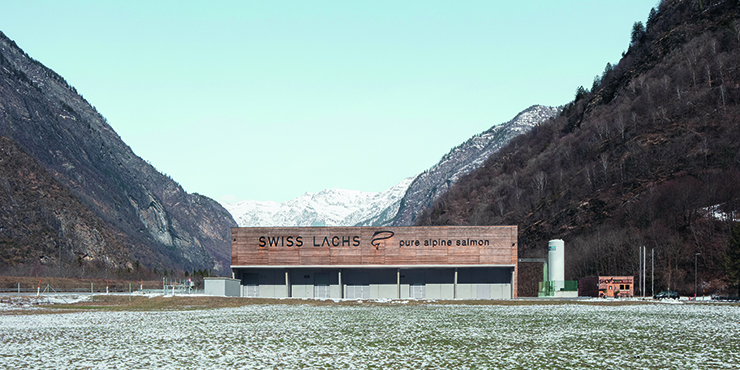Designing a sustainable supply chain: salmon farming in the heart of the Alps

An indoor salmon farm has been in operation in Lostallo (GR) since 2016. A highly innovative industrial project that has become a reference point for the sector in Switzerland and abroad. We talk about it with the Project Manager, Claudio Ferro.
How did you come up with the idea of setting up a salmon farm in the Swiss Alps?
Swiss Lachs contacted AFRY with the intention of producing salmon in a safe and sustainable way through an innovative, zero-kilometer farming, with the aim of recreating the entire supply chain in one place to allow the fish to live in a healthy environment. and controlled, minimizing both the environmental impact due to transport and the stress that this causes to the fish.
How did you choose the site and what did you do?
Many factors had to be considered, also bearing in mind that in Switzerland a breeding facility must be located in an industrial area.
and have access to abundant clean water. In addition, it must be able to return the purified farm water to a watercourse.
In Lostallo, an easily accessible place in an attractive landscape, an industrial area has been identified where it is possible to build the electrical and drainage infrastructures essential for livestock farming.
The project was followed by the AFRY team in all its phases, from the feasibility study to the final realization; including the construction phase up to the insertion of the first fish in the water.
Thanks to our skills, we were able to carry out most of the investigations internally; we checked the viability, assessed the presence of natural hazards and made agreements with the various authorities to have the necessary infrastructures built. After the confirmation of the feasibility we applied for the permits and the construction license. A lot of weight has been given to the study of the environmental impact.
What characteristics should an industrial building have?
In an industrial building, production and the plant to guarantee it have priority. Construction is not just a container but an integral part of the process. The safety of workers, the concept of hygiene, the study of work procedures, the planned and extraordinary maintenance of the plant, are principles that the designers had to study and consider in depth in their work.
How did the construction phase go and which stage was the most challenging?
15 months have passed from the beginning of the works to the introduction of the first fish in the water. After a careful analysis with the team of engineers, we opted for a prefabricated concrete structure that provided advantages in terms of both costs and construction times while respecting the needs of the designer. 34-meter concrete trusses were built, since due to the presence of the large tanks it was not possible to erect pillars inside the building. The structure by elements ensured the necessary flexibility during the construction phase, since the plants had different delivery times.
It was a great challenge that required a considerable commitment both in the design and construction phase, which was won to the great satisfaction of all.